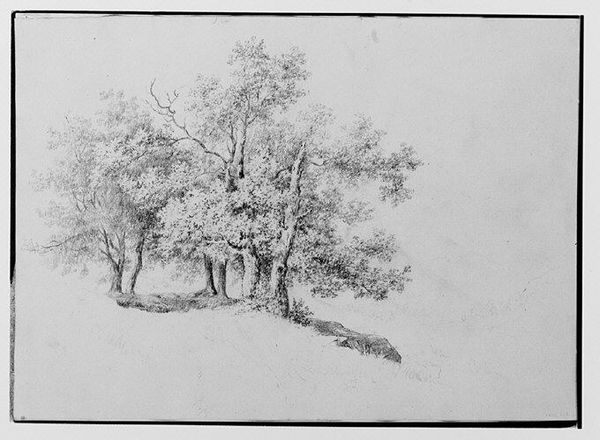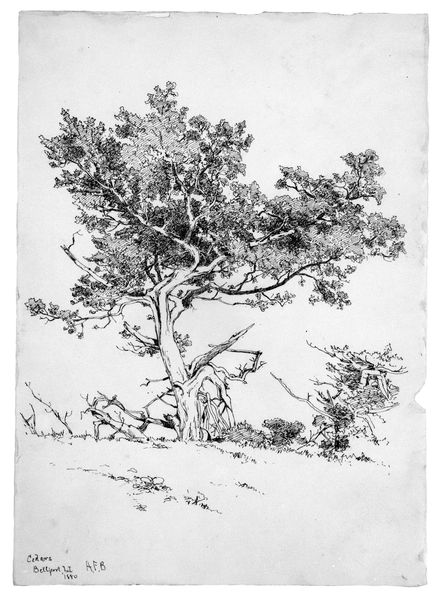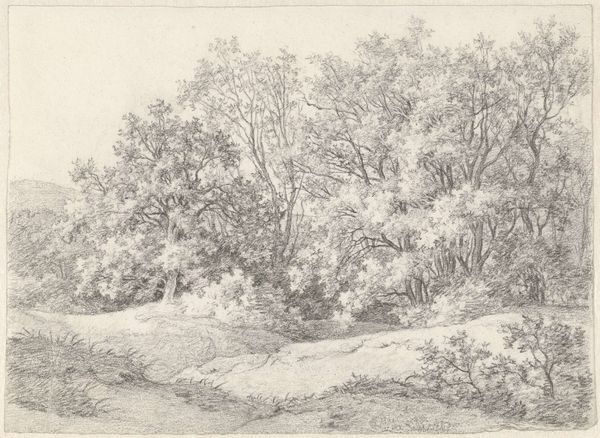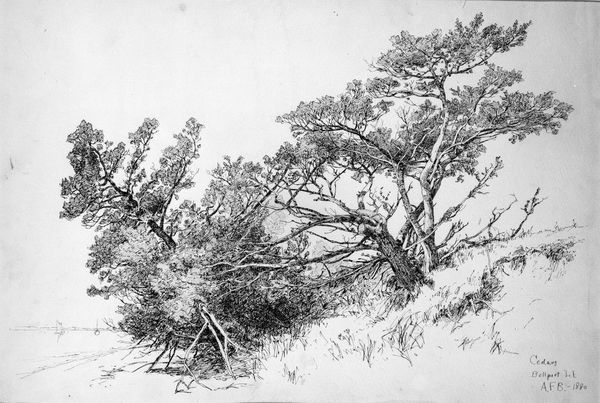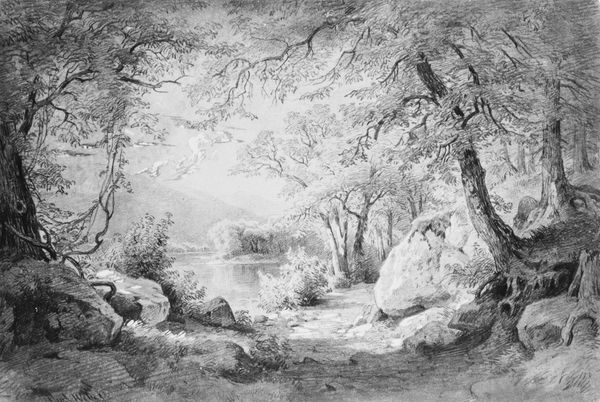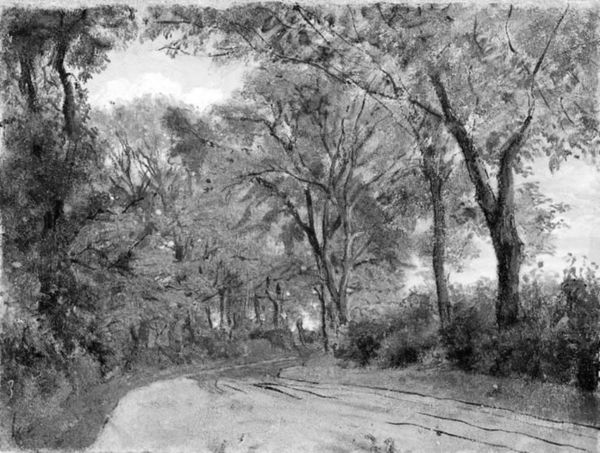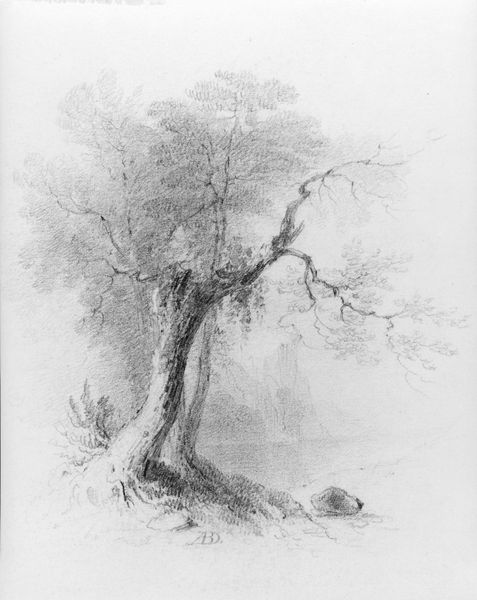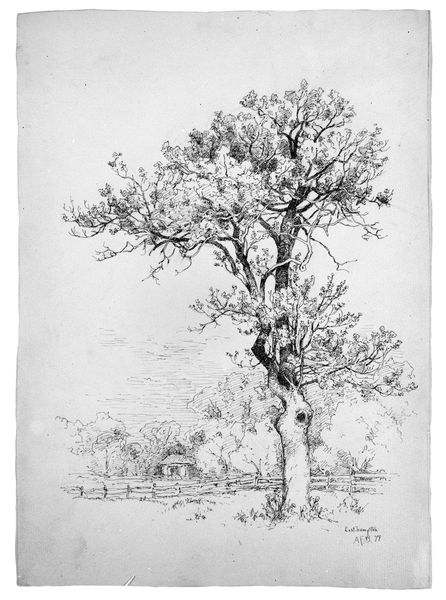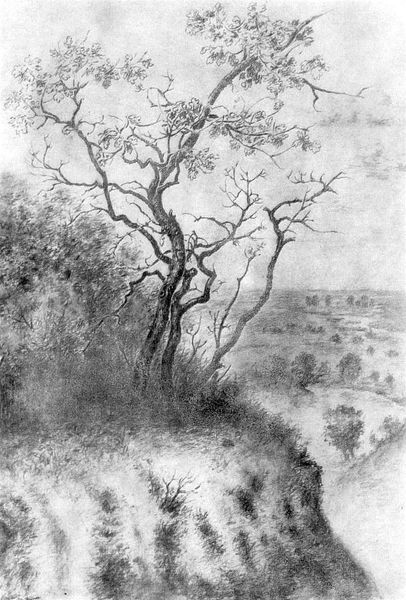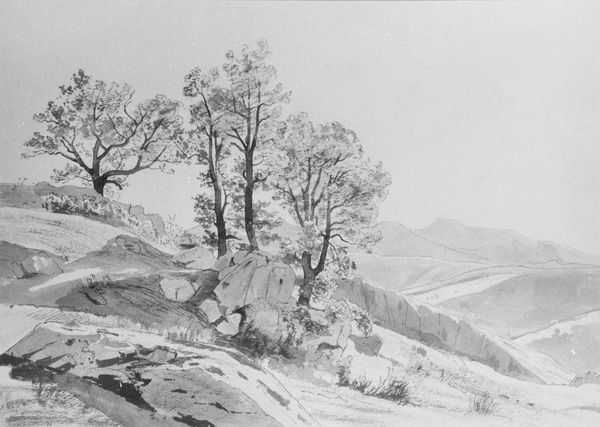
drawing, graphite
#
drawing
#
landscape
#
charcoal drawing
#
graphite
#
realism
Dimensions: 6 5/8 x 10 3/8 in. (16.8 x 26.4 cm)
Copyright: Public Domain
Curator: Looking at "Landscape," a charcoal and graphite drawing from 1874 by David Johnson, currently residing at The Met. There's something incredibly tranquil about the rendering, wouldn't you agree? Editor: Yes, the overwhelming gray evokes such serenity, although almost oppressively so. The balance between meticulous detail in the foliage and broad strokes in the sky create tension between observed experience and, perhaps, a cultural performance of that experience. What do we know about its initial reception? Curator: The socio-political conditions are quite interesting. Landscape drawings like this were immensely popular, tied into a romantic ideal of nature, especially as urbanization rapidly altered the American landscape. It really became enmeshed with civic discourse on natural conservation. The Hudson River School movement, of which Johnson was an active member, also shaped the trajectory of these artistic movements. Editor: But to get back to materials. The density of shading he achieves with charcoal and graphite must've required significant labor. Was this intended for exhibition, or was it possibly a study? One could assess his intent by further analyzing the paper it is drawn on, and thinking about this drawing's location of production and circulation. Curator: Archival information suggest these landscape drawings offered accessibility. Their relative affordability compared to large-scale oil paintings of that time democratized art ownership and viewing within a growing middle class, becoming quite popular in their reception. They were easily traded and put into circulation in the expanding art market of the late 19th century. Editor: It does seem almost like a preparatory exercise, yet the meticulous detail pushes against this designation. I suppose understanding its patronage reveals clues as to the purpose and its production! I see evidence of rubbing in the grass, was that commonly done in academic settings? Curator: Considering these elements together gives us insight not just to Johnson's artistry, but how landscape drawing served a larger socio-cultural role in shaping perceptions of the American countryside during this time. Editor: Indeed. I hadn't thought about it in relation to ideas of preservation and conservation as linked to middle class experience. Curator: Art history is more than just pictures; it’s the material conditions, political implications, and our ongoing interpretations of those relations. Editor: That’s a point well made, thank you.
Comments
No comments
Be the first to comment and join the conversation on the ultimate creative platform.
